<< Previous | Displaying results 6301-6350 of 6768 for "" | Next >>
A digital representation of the United States 6th Armored Division's flag. The US 6th Armored Division is also known as the "Super Sixth." During World War II, they were involved in the Battle of the Bulge and overran the Buchenwald concentration camp. The 6th Armored Division was recognized as a liberating unit in 1985 by the United States Army Center of Military History and the United States Holocaust Memorial Museum (USHMM).
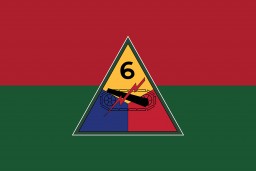
A digital representation of the United States 71st Infantry Division's flag. The US 71st Infantry Division (the "Red Circle" division) was established in 1943. During World War II, they were involved in taking the cities of Coburg, Bayreuth, and Regensburg. The division also liberated Gunskirchen, a subcamp of Mauthausen. The 71st Infantry Division was recognized as a liberating unit in 1988 by the United States Army Center of Military History and the United States Holocaust Memorial Museum (USHMM).

A digital representation of the United States 80th Infantry Division's flag. The US 80th Infantry Division (the "Blue Ridge" division) was established in 1917 and fought in World War I. During World War II, they were involved in the Battle of the Bulge. The division entered Buchenwald concentration camp and liberated Ebensee, a subcamp of Mauthausen. The 80th Infantry Division was recognized as a liberating unit in 1985 by the United States Army Center of Military History and the United States Holocaust…
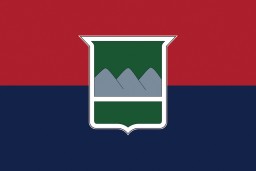
A digital representation of the United States 82nd Airborne Division's flag. The US 82nd Airborne Division (the "All American" division) was established in 1918 and fought in World War I. During World War II, they were involved in D-Day and Battle of the Bulge. The division also overran Wöbbelin, a subcamp of Neuengamme. The 82nd Airborne Division was recognized as a liberating unit in 1991 by the United States Army Center of Military History and the United States Holocaust Memorial Museum (USHMM).
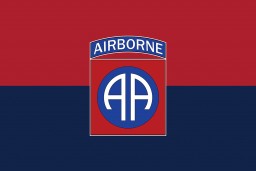
A digital representation of the United States 83rd Infantry Division's flag. The US 83rd Infantry Division (the "Thunderbolt" division) was established in 1917 and fought in World War I. During World War II, they were involved in the Battle of the Bulge and captured the city of Halle. The division also encountered Langenstein, a subcamp of Buchenwald. The 83rd Infantry Division was recognized as a liberating unit in 1993 by the United States Army Center of Military History and the United States…
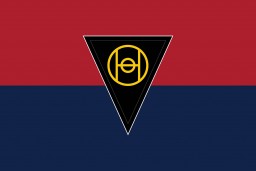
A digital representation of the United States 84th Infantry Division's flag. The US 84th Infantry Division (the "Railsplitter" division) was established in 1917. During World War II, they were involved in the Battle of the Bulge and captured the city of Hannover. The division also uncovered Hannover-Ahlem and Salzwedel, two satellite camps of the Neuengamme concentration camp. The 84th Infantry Division was recognized as a liberating unit in 1993 by the United States Army Center of Military History and…
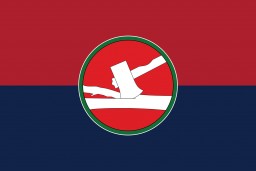
A digital representation of the United States 86th Infantry Division's flag. The US 86th Infantry Division (the "Blackhawk" division) was established in 1917 and fought in World War I. During World War II, they discovered the Attendorn civilian forced-labor camp. The 86th Infantry Division was recognized as a liberating unit in 1996 by the United States Army Center of Military History and the United States Holocaust Memorial Museum (USHMM).

A digital representation of the United States 89th Infantry Division's flag. The US 89th Infantry Division (the "Rolling W" division) was established in 1917 and fought in World War I. During World War II, they captured the town of Eisenach and the city of Zwickau. The division overran Ohrdruf, a subcamp of Buchenwald. The 89th Infantry Division was recognized as a liberating unit in 1988 by the United States Army Center of Military History and the United States Holocaust Memorial Museum (USHMM).

A digital representation of the United States 8th Armored Division's flag. The US 8th Armored Division is also known as the "Iron Snake" or "Thundering Herd" division. During World War II, they liberated Halberstadt-Zwieberge, a subcamp of Buchenwald. The 8th Armored Division was recognized as a liberating unit in 1995 by the United States Army Center of Military History and the United States Holocaust Memorial Museum (USHMM).
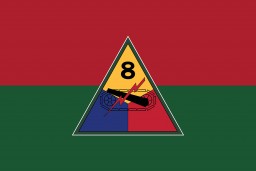
A digital representation of the United States 8th Infantry Division's flag. The US 8th Infantry Division (the "Golden Arrow" or "Pathfinder" division) was established in 1918 and fought in World War I. During World War II, they captured the cities of Rennes and Brest. The division also encountered Wöbbelin, a subcamp of Neuengamme. The 8th Infantry Division was recognized as a liberating unit in 1988 by the United States Army Center of Military History and the United States Holocaust Memorial Museum…
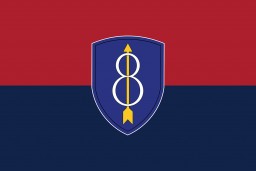
A digital representation of the United States 90th Infantry Division's flag. The US 90th Infantry Division (the "Tough Ombre" division) was established in 1917 and fought in World War I. During World War II, they were involved in D-Day and the Battle of the Bulge. The division also captured the city of Mainz and overran Flossenbürg concentration camp. The 90th Infantry Division was recognized as a liberating unit in 1985 by the United States Army Center of Military History and the United States…
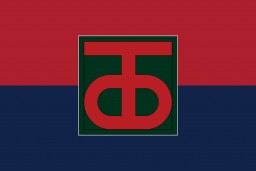
A digital representation of the United States 95th Infantry Division's flag. The US 95th Infantry Division (the "Victory" Division) was established in 1942. During World War II, they captured the cities of Metz and Dortmund. The division also undercovered a German prison and civilian labor camp in Werl. The 95th Infantry Division was recognized as a liberating unit in 1995 by the United States Army Center of Military History and the United States Holocaust Memorial Museum (USHMM).

A digital representation of the United States 99th Infantry Division's flag. The US 99th Infantry Division (the "Checkerboard" or "Battle Babies" division) was established in 1942. During World War II, they were invovled in the Battle of the Bulge and liberated a Dachau subcamp near Mühldorf. The 99th Infantry Division was recognized as a liberating unit in 1992 by the United States Army Center of Military History and the United States Holocaust Memorial Museum (USHMM).

A digital representation of the United States 9th Armored Division's flag. The US 9th Armored Division was known as the "Phantom" division. During World War II, they were involved in the Battle of the Bulge and also liberated Zwodau and Falkenau an der Eger, two subcamps of Flossenbürg. The 9th Armored Division was recognized as a liberating unit in 1993 by the United States Army Center of Military History and the United States Holocaust Memorial Museum (USHMM).
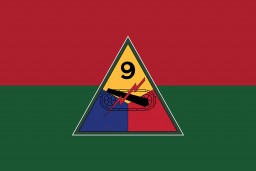
Postwar photograph of gas chamber for mass murder in the Auschwitz main camp. Poland, ca. 1947. In mid-August 1940, Auschwitz concentration camp authorities put into operation a crematorium adjacent to a morgue. This building was located just outside the boundaries of the Auschwitz main camp. In September 1941, the morgue was converted to a gas chamber for mass murder where several hundred people could be killed at a time. This gas chamber was used until December 1942, though the crematorium remained…
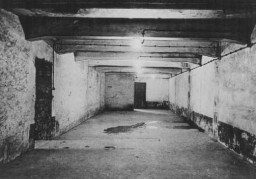
Thomas with Eliza, one of his grandchildren. 1996. With the end of World War II and collapse of the Nazi regime, survivors of the Holocaust faced the daunting task of rebuilding their lives. With little in the way of financial resources and few, if any, surviving family members, most eventually emigrated from Europe to start their lives again. Between 1945 and 1952, more than 80,000 Holocaust survivors immigrated to the United States. Thomas was one of them.
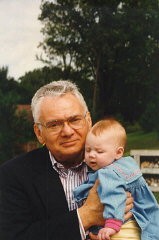
Pictured from left to right: Field Marshal Paul von Hindenburg, Kaiser Wilhelm II, and General Erich Ludendorff study maps during World War I. January 1917.
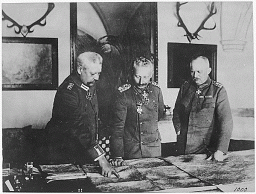
Field Marshal Paul von Hindenburg walks along a flower-covered path on his 70th birthday. On either side, crowds of children cheer. October 2, 1917. Hindenburg will later be elected president of Germany in 1925, during the Weimar Republic. © IWM Q 23976
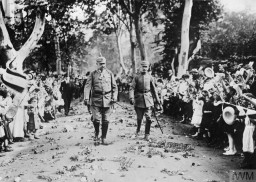
A public demonstration is held on the Unter den Linden in Berlin on November 9, 1918. On this day, Kaiser Wilhelm II abdicated the throne after a recent naval mutiny in Kiel inspired widespread revolution. © IWM Q 88164
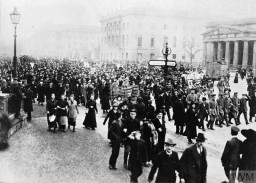
In April 1947, the British Navy intercepted the ship Theodor Herzl en route from Europe to British-controlled Mandatory Palestine. On board were hundreds of Holocaust survivors, including children, seeking a home. This photograph shows British soldiers transferring some of the Jewish refugee children to a vessel for deportation to Cyprus detention camps. Haifa port, British-controlled Mandatory Palestine, April 1947.
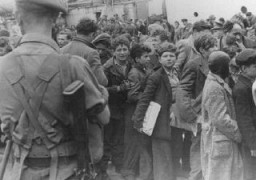
Nazi propaganda cartoon by Seppla (Josef Plank), a political cartoonist. Germany, date uncertain [probably during World War II]. Beginning in the 1920s, Nazi propagandists promoted the antisemitic myth that Jews were engaged in a massive conspiracy to take over the world. This false notion alleged that “international Jewry” used various people and groups as part of a plan for global conquest. At the time, an octopus extending its tentacles over the globe was a common visual metaphor for this…
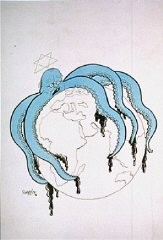
Adolf Hitler passes through the Brandenburg Gate on the way to the opening ceremonies of the Olympic Games. Berlin, Germany, August 1, 1936.
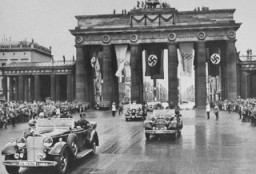
May 7, 1919. On this date, the Treaty of Versailles was presented to the German delegation. The treaty's "War Guilt Clause" forced Germany to accept responsibility for initiating WWI.
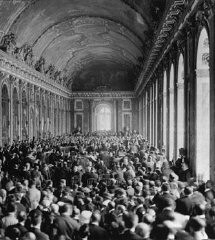
November 9, 1923. On this date, Adolf Hitler and the Nazi Party attempted to overthrow the Weimar Republic.
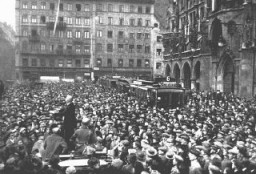
June 12, 1929. On this date, future diarist Anne Frank was born to Otto and Edith Frank. She would become a symbol for the children who died in the Holocaust.

February 24, 1920. On this date, Adolf Hitler presented a 25-point Program (the Nazi Party Platform) to a Nazi Party meeting.
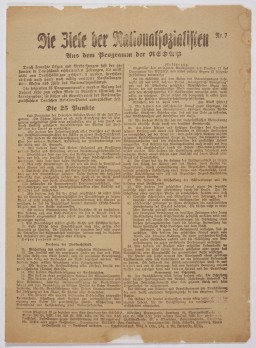
July 22, 1932. On this date, Adolf Hitler delivered a campaign speech promising salvation for Germany.
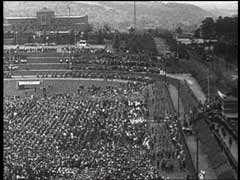
January 24, 1931. On this date, Bela Weichherz wrote in a diary about his daughter. All of the family would perish in the Holocaust.
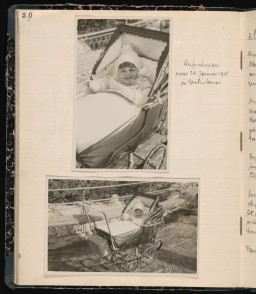
September 16, 1919. On this date, Adolf Hitler issued his first written comment on the so-called Jewish Question.
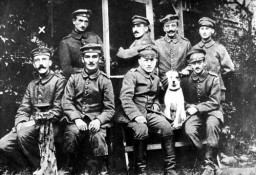
February 27, 1925. On this date, Adolf Hitler declared the reformulation of the Nazi Party with himself as the leader.
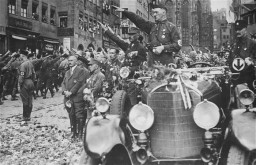
November 8, 1932. On this date, Franklin D. Roosevelt was elected as the 32nd President of the United States.
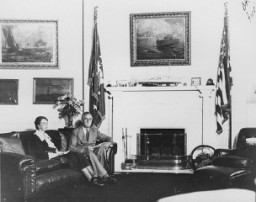
June 28, 1914. On this date, Archduke Franz Ferdinand was assassinated in Sarajevo, Yugoslavia, precipitating WWI.
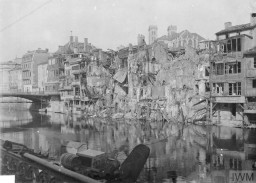
July 1, 1916. On this date, the most causalities in a single day during World War I occurred at the Battle of Somme.
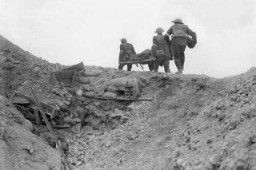
April 24, 1915. On this date, Ottoman authorities rounded up 240 Armenian leaders in Constantinople, an event commemorated today by Armenians as the beginning of the genocide.
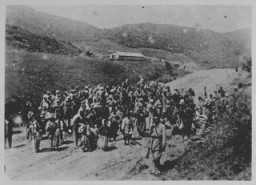
November 9, 1938. On this date, the Nazi regime coordinated a wave of antisemitic violence in Nazi Germany. This became known as Kristallnacht or the "Night of Broken Glass."

March 22, 1933. On this date, the SS established the Dachau concentration camp in Germany.
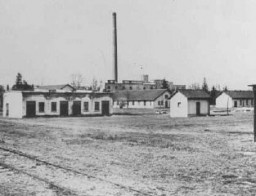
January 30, 1933. On this date, Adolf Hitler was appointed as Chancellor of Germany and the Nazi Party assumed control.
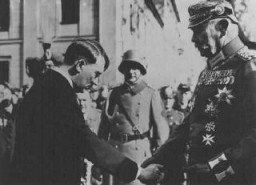
April 1, 1933. On this date, the Nazi Party and its affiliates organized a nationwide boycott of Jewish-owned businesses in Germany.
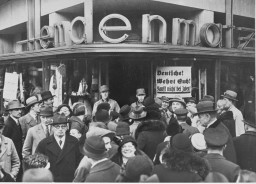
May 10, 1933. On this date, books deemed "un-German" are publicly burned throughout Germany.
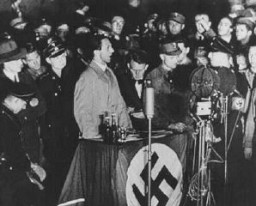
August 1, 1936. On this date, the Summer Olympics opened in Berlin while the Nazis camouflaged their racist and antisemitic policies.

September 15, 1935. On this date, the Nazi government passed the Nuremberg Race Laws, making Jews legally different from their non-Jewish neighbors.
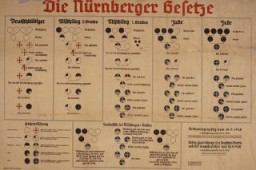
July 15, 1937. On this date, SS authorities opened the Buchenwald concentration camp in Germany.
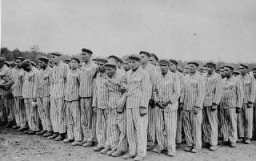
April 25, 1933. On this date, the German government issued the Law against Overcrowding in Schools and Universities, limiting the amount of Jewish students.

February 28, 1933. On this date, President Hindenburg issued the Decree for the Protection of People and the Reich, also known as the Reichstag Fire Decree.
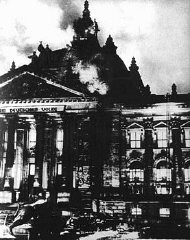
December 2, 1938. On this date, the first Kindertransport of German Jewish children arrived in Great Britain.
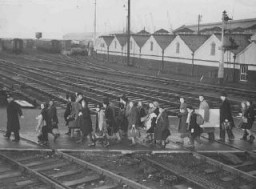
November 12, 1938. On this date, the German government issued the Decree on the Elimination of the Jews from the Economic Life.
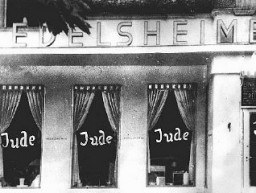
August 17, 1938. On this date, the German government issued the Executive Order on the Law on the Alteration of Family and Personal Names.
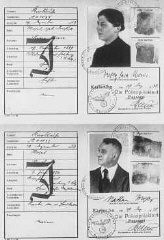
October 5, 1938. On this date, the Reich Ministry of the Interior invalidated all German Jews' passports and required them to have a "J" stamped on them.
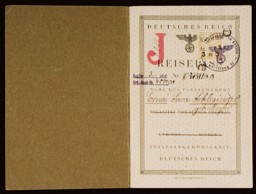
November 8, 1937. On this date, Josef Goebbels and Julius Streitcher open an antisemitic exhibit named "Der Ewige Jude."
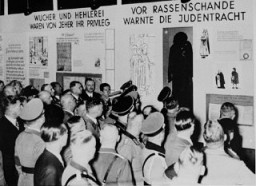
November 11, 1938. On this date, Robert Harlan wrote about what he witnessed during Kristallnacht.
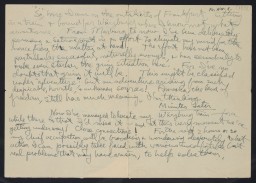
We would like to thank Crown Family Philanthropies, Abe and Ida Cooper Foundation, the Claims Conference, EVZ, and BMF for supporting the ongoing work to create content and resources for the Holocaust Encyclopedia. View the list of donor acknowledgement.